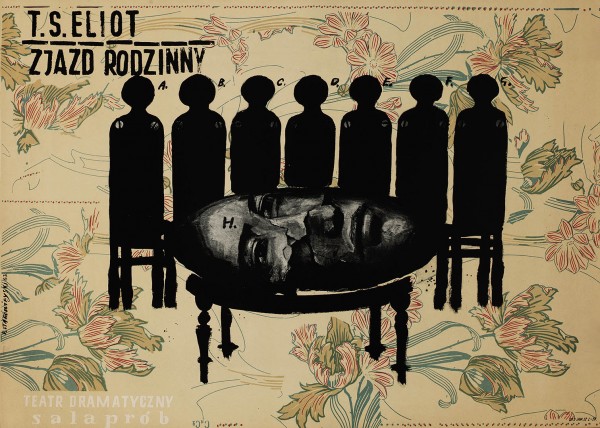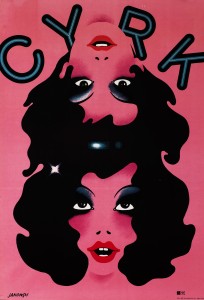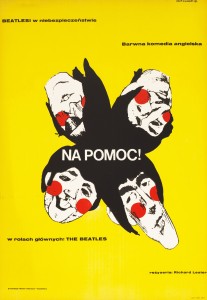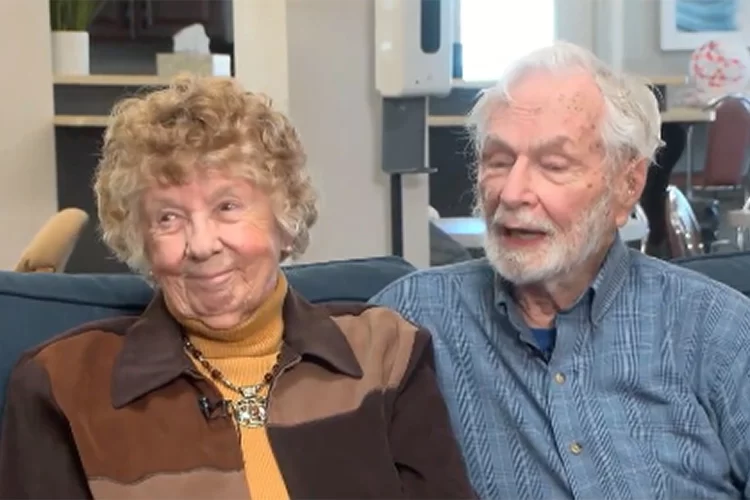
‘Polish Posters: Art and Allusion’ opens April 4 at Bates College Museum of Art

Franciszek Starowieyski’s 1963 poster promotes a Polish production of T.S. Eliot’s play “The Family Reunion.”
In one of its two spring exhibitions, the Bates College Museum of Art showcases posters from Poland promoting cultural events from the 1960s to the 2000s, exploring factors that won these works an international following and tracing the evolution of Polish graphic arts during the transition away from communism.
Polish Posters: Art and Allusion opens Friday, April 4, and closes on Saturday, May 24. The posters will be shown in the Museum’s Synergy Space Gallery, Olin Arts Center, 75 Russell St., and in satellite galleries in Roger Williams Hall, 9 Andrews Road (Alumni Walk) and Hedge Hall, 7 Andrews Road.
Open to the public at no cost, museum hours are 10 a.m. to 5 p.m. Monday through Saturday, and until 7 p.m. Wednesdays during the academic year. For more information, please contact 207-786-6158 or museum@bates.edu.
In a related event, art scholar Beata Niedzialkowska offers a lecture titled Art on the Streets: The Polish Poster as Cultural Commentary at 6 p.m. Wednesday, April 23, in Room 104 of the Olin Arts Center. A reception follows in the museum.
Showing concurrently with the poster exhibition is the annual Senior Thesis Exhibition, featuring works in diverse media by 10 studio art majors at Bates. A reception at the museum at 6 p.m. April 4 celebrates the opening of both exhibits. Learn more about the Senior Thesis Exhibition.
A former member of the art and visual culture faculty at Bates and a specialist in art from Northern Europe and Poland, Niedzialkowska helped prepare the poster exhibition. The posters are part of a recent gift to the museum of Polish and Cuban graphic arts by Dale Doody, in honor of his parents, Omar and Leitha Doody.
A curatorial intern at the museum, Bates senior Madeline Smit ’14 of Lawrenceville, N.J., dedicated two years of work to an inventory of the posters and the creation of the exhibition, collaborating closely with Niedzialkowska and museum curator William Low.
Smit discusses the project during the March 28 Mount David Summit, Bates’ annual campus-wide celebration of student achievement in diverse disciplines.
The artworks in Polish Posters promote films, the circus, exhibitions and other cultural events in Poland over four decades. Graphic arts during that period mirrored the progress of Polish society and culture from tight government control to contemporary freedom of expression.

Intended to elevate the circus poster to a new aesthetic level, the “Cyrk” posters are among the best-known products of the Polish School of Posters. The artist here is Witold Janowski.
From the 1950s through the 1980s, the Polish School of Posters combined the aesthetics of painting with the succinctness and simple metaphor of the poster. It developed characteristics such as painterly gesture, linear quality and vibrant colors, as well as a sense of personality, humor and fantasy, writes Joseph S. Czestochowski in Contemporary Polish Posters in Full Color (Dover Publications, 1979).
As exemplified by the renowned “Cyrk” circus posters, the Polish School of Posters had a significant international influence, notably through their exploitation of the power of suggestion through allusions and metaphors.
They combined robust colors, slogans and familiar symbols to send clear, concise messages while also striking a certain aesthetic tension. The artist’s sensibility and outlook, too, were part of the message.
For Smit, helping to produce this exhibition was eye-opening in terms of both the subject matter and the world of gallery and museum work, a field in which she plans to make her career.
Smit had taken a couple of courses with Niedzialkowska and had a strong working relationship with her. Among other guidance, Niedzialkowska — who has family connections in the Polish entertainment industry — provided insights into Polish film, music and theater.
“Her support was indispensable to my understanding of the cultural context of the posters,” says Smit. She adds, “Working with these materials has helped me gain a fundamental understanding of the curatorial process, as well as an appreciation for the amount of creative and practical work that goes into organizing an effective exhibit.”



